Opinion: Remembering Nonny Burack And The Merry Maple
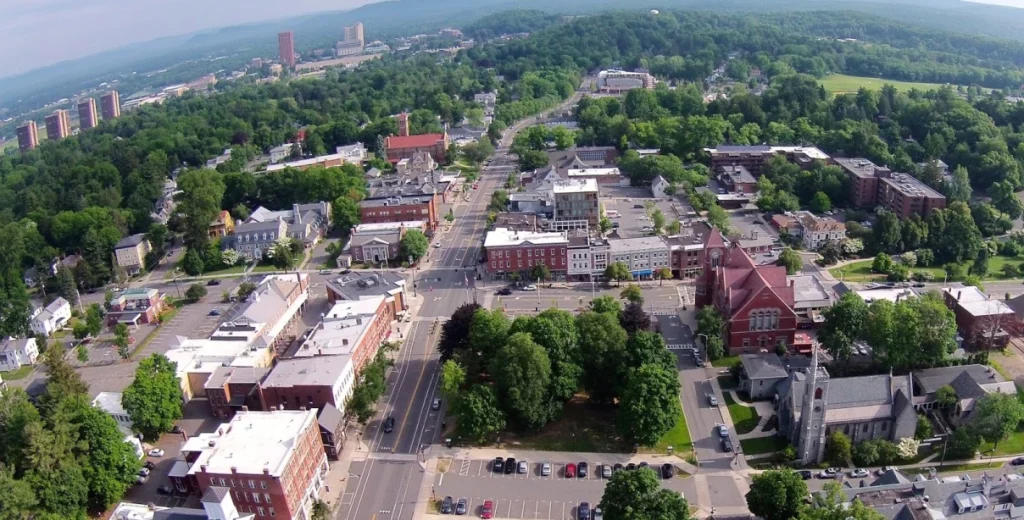
Densely treed portion of Amherst Town Common Photo: Larry Kelley, 2015
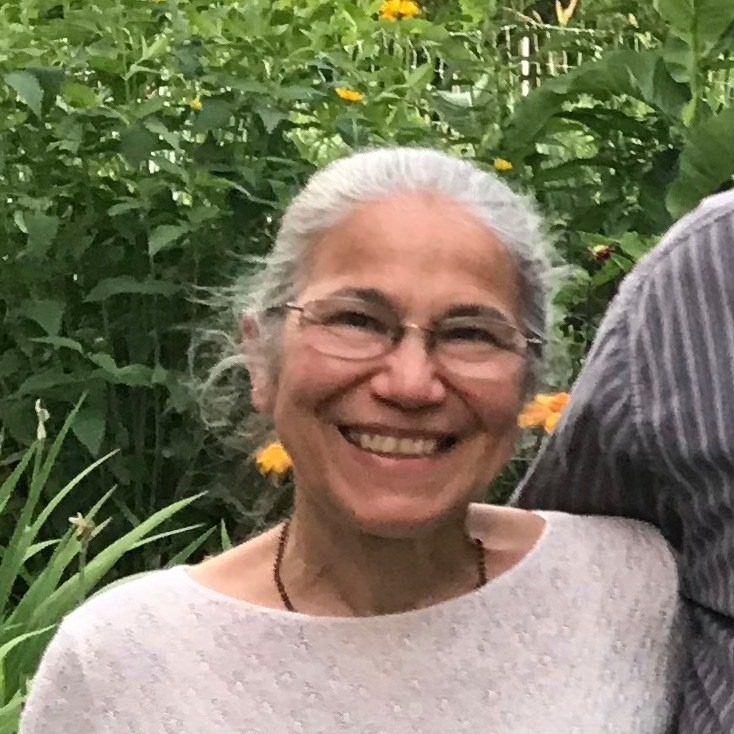
It was at this time last year, just before Thanksgiving, that our neighbor Nonny Burack died, and our brief but memorable friendship has been on my mind as the season comes around again. All the more so as one of the best-known and beloved trees of Amherst has just been felled. Nonny was an ardent lover of trees, knew almost every notable tree in town, and was an active member of the town’s Public Shade Tree Committee. When the proposal to cut down the Merry Maple came before the committee in August of this year, she would would have fought it tooth and nail. Instead, we can only mourn its loss after the fact and pledge to do better next time.
Nonny was one of the first people to greet me when my husband and I moved to our North Amherst neighborhood in the fall of 2018, and soon she and I were taking walks together, mostly through the UMass campus, where Nonny would stop along the way to draw my attention to a particular tree, tell me its history, and allow time for us to admire and commune with it, ducking under its sheltering canopy with childlike delight. When my cousin was visiting from England, Nonny brought us a map of the UMass campus with all its trees identified. And she told me stories about the various campaigns to save trees, both on university land and town wide. Not all these efforts were successful, but Nonny never lost heart. Among many other civic activities she was engaged in, she was a writer extraordinaire of letters to the editor. We are all the poorer now that her eagle eye is no longer trained on town affairs.
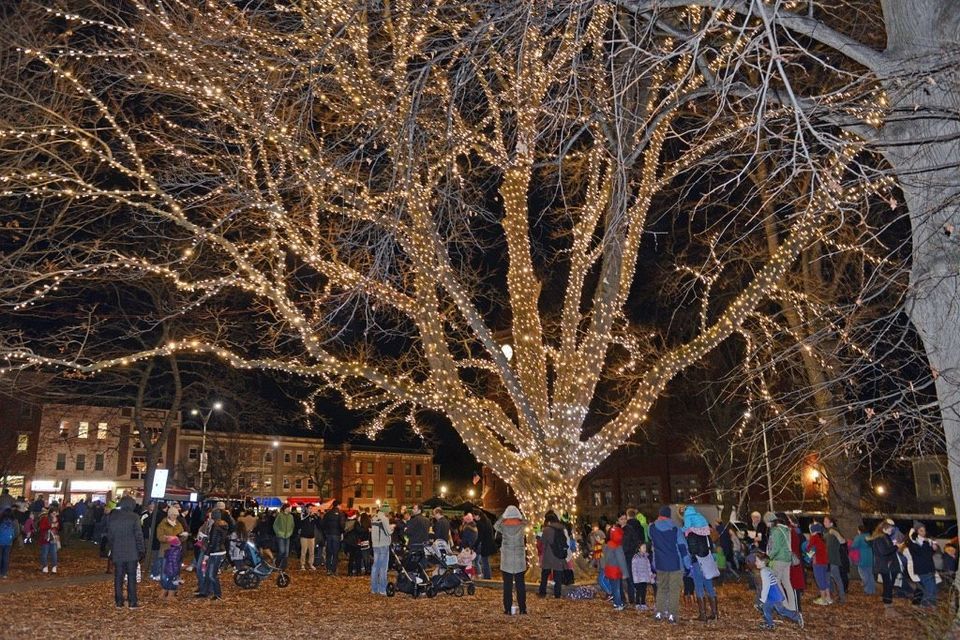
Today, as I remember Nonny and mourn her loss, I also mourn the loss of one of this town’s iconic trees, the Norway maple, or “Merry Maple”, on the Town Common. Although, according to Trees in Amherst (1975 edition), this tree was planted in 1875, there is some uncertainty as to its exact age, with some knowledgeable people in town having judged it to be more like 80 rather than nearly 150 years old. Apparently the typical lifespan of a Norway maple is 150 years, and it was clearly starting to feel its age. Still, this tree had been the center and the namesake of Amherst’s annual town tree-lighting celebration since the 1970s, and two generations of children and college students had grown up to the hot cider and hayrides, the middle-school chorus singing Christmas, Hannukah, and Kwanzaa songs on the steps of the Town Hall, and the UMass marching band (under the direction of legendary band leader George Parks) parading down North Pleasant Street to the Town Common with Santa leading the way in a fire engine, throwing candy to the children. It was the official kick-off to the holiday season, and we rarely missed a year, especially when our son was singing in the chorus.
Amherst Common Looking South, c. 1882 (Source: Digital Amherst)
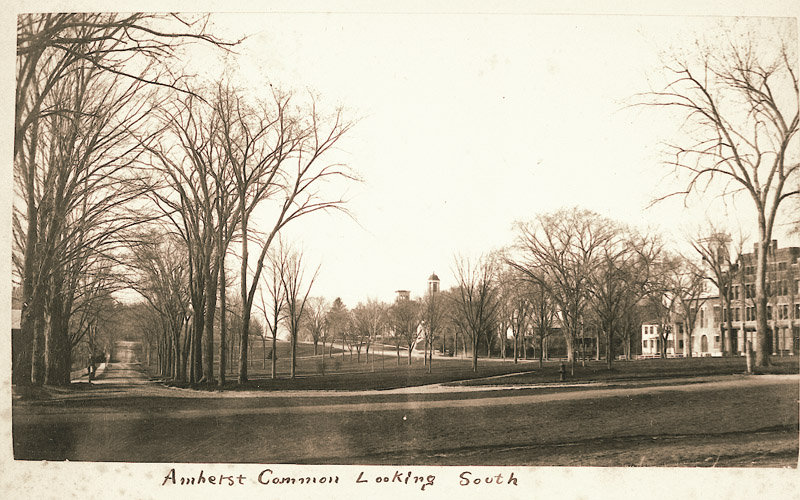
If the Merry Maple had indeed been planted in 1875, then Emily Dickinson would have seen it, since she lived until 1886. Her brother Austin was Treasurer of Amherst College and also served as President of the Village Improvement Society (est. 1877), which succeeded the Amherst Ornamental Tree Association (est. 1857) and proposed plantings and other earthworks, subject to town approval. Austin Dickinson was a friend of the architect Frederick Law Olmsted who, at Dickinson’s behest, drew up a plan for the Amherst Town Common in 1874. The Village Improvement Society undertook the project of draining the frog pond on the Town Common and planting shade trees on it as well as on the East, North, and South Village Commons.
Today there are a number of committees and town entities in Amherst that make decisions about tree plantings, removals, and replacements and engage in long-range planning for historical preservation. In 2005 the Amherst Historical Commission published the comprehensive Amherst Preservation Plan, which reviewed the history of the town and proposed short, medium, and long-term goals for the protection of its distinctive character. The mission of the Amherst Public Shade Tree Committee is to preserve, protect, and promote town shade trees:
Street trees provide beauty, shade, breathable air, pure ground water, stable soil, and habitat for wildlife. Therefore, our committee works in conjunction with the town Tree Warden to get trees properly selected, planted, and cared for throughout town. We also work to ensure that trees get taken into account in town policies and planning. Our hope is to make Amherst a greener and lovelier town.
Amherst clearly has a long history of caring for its trees. It keeps an inventory of street trees, organizes volunteer plantings, and encourages homeowners in town to protect and preserve the trees on their property. In this era of catastrophic climate change, town residents are mindful of the fact that our trees sequester and store carbon, regulate the temperatures of buildings, and provide much-needed sheltering shade. We also see them as beloved members of the community, providing a sense of stability and continuity in times of rapid change.
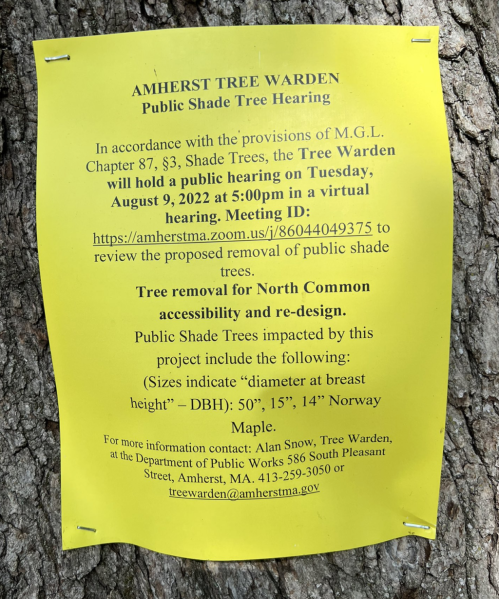
It was in August of this year that the Tree Warden posted a notice on the trunk of the Merry Maple announcing a public hearing on the proposal to cut it down, along with two smaller Norway maples, in order to accommodate plans for the re-design of the Town Common—including the year-round bandstand that Olmsted had proposed back in 1874. I failed to attend that hearing, or even to register the fact that there was one. With two abstentions and one No vote, the Public Shade Tree Committee approved the Tree Warden’s recommendation for removal and the Town Manager gave it the final go-ahead. Several townspeople did oppose the measure and there had been a Save the Merry Maple Facebook page since November 2018, but apparently the objections did not rise to a critical mass; and at last the deed was done, a daylong affair on Thursday, November 17, 2022.
In my 32 years as a resident of Amherst, I recall other efforts to preserve two other beloved trees. One was the majestic katsura tree that stood in front of Grace Episcopal Church on the Town Common, brought back from Japan in 1877 as a seed by William Clark (later a founder of UMass Amherst). When it was cut down in 2003, it stood 71 feet tall with a canopy that spread out 85 feet by 65 feet. The church and its congregation deliberated for some time over the fate of the tree, which had a large amount of rot in its central leader but, although they considered various alternatives, in November 2003 they finally decided to cut it down. You can see a photograph of the tree here.
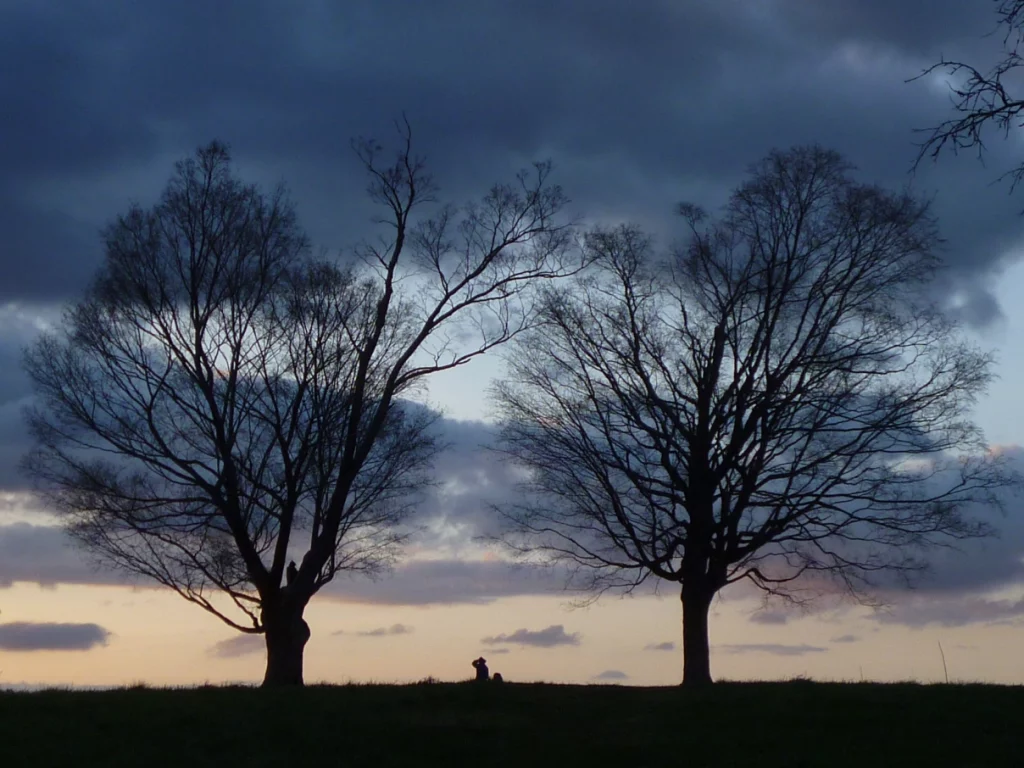
Another tree whose loss affected the townspeople deeply was the maple tree atop Mt. Pollux. Together with its twin, it presided over a magnificent 360-degree view of the town, the University, the Holyoke Range and Mt. Norwottuck. Astronomers set up telescopes there for special events, such as the Venus Transit in 2004. Many local people, including friends of mine, have chosen to get married there, and it holds a special place in my heart as it featured centrally in a film our son made in 2003, his senior year of high school. But the tree had been repeated struck by lightning and it was ultimately deemed necessary to take it down. The felling was carried out by the town on the 27th of March, 2018, the same day that my mother died.
On the morning that the Merry Maple was being felled, when I mentioned to the Tree Warden that it had been nearly a year since Nonny had left us, he said that she “would have been heartbroken.” I agree. But I believe that Nonny would also have fought for the Merry Maple with the same courage and persistence as she fought for the lives of so many other trees, and for her own, as she refused to go gently into old age, sickness, and death.
Death is an inevitable part of life and if a tree is sick or dying or presents a hazard to humans, cutting it down may be the right decision to make. But just as we must make every effort to preserve life and the best possible of quality of life for our fellow humans, we should similarly make such efforts on behalf of this planet’s trees. When a tree stands in the way of development we must of course weigh the pros and cons of the case; but building and landscaping plans can be designed in such a way as to minimize the loss of trees, especially when the trees in question are venerable and hold a special place in the hearts and culture of a community.
On the last night of the Merry Maple’s life, a group of townspeople, led by a new member of the Public Shade Tree Committee, held an event in its honor. People drank apple cider and ate cider donuts as they would have on the first Friday of next month at the annual Merry Maple holiday lighting celebration. It was a subdued affair. People placed candles around the tree and posted their memories of the tree and in a red mailbox, whence they will be collated and displayed at some point in the future and later deposited in a town history archive. There was a sign-up sheet for people interested in taking home part of the tree to remember it by. A musician played dirge-like music, and people talked quietly among themselves. My friend Shailja and I circumambulated the tree seven times, wishing we could invoke a spirit of celebration and form a conga line around it, especially for the children present. At the close of the event, the Grace Episcopal Church tolled its bell one last time for the Merry Maple.

The Merry Maple, 2015. Photo: Josna Rege
The next morning, by the time I had caught wind of it and betaken myself to the Town Common, a crew had already been working for a few hours and half of the tree had been cut down. The smaller branches were being fed into a chipper on the spot, while the larger branches and the trunk were taken to another site to be cut up and distributed to interested members of the community. The Tree Warden affirmed that the Public Shade Tree Committee welcomes donations to be used to purchase seedlings for replacement plantings around town. He also said that the committee would be scheduling a tree planting in Nonny’s honor.
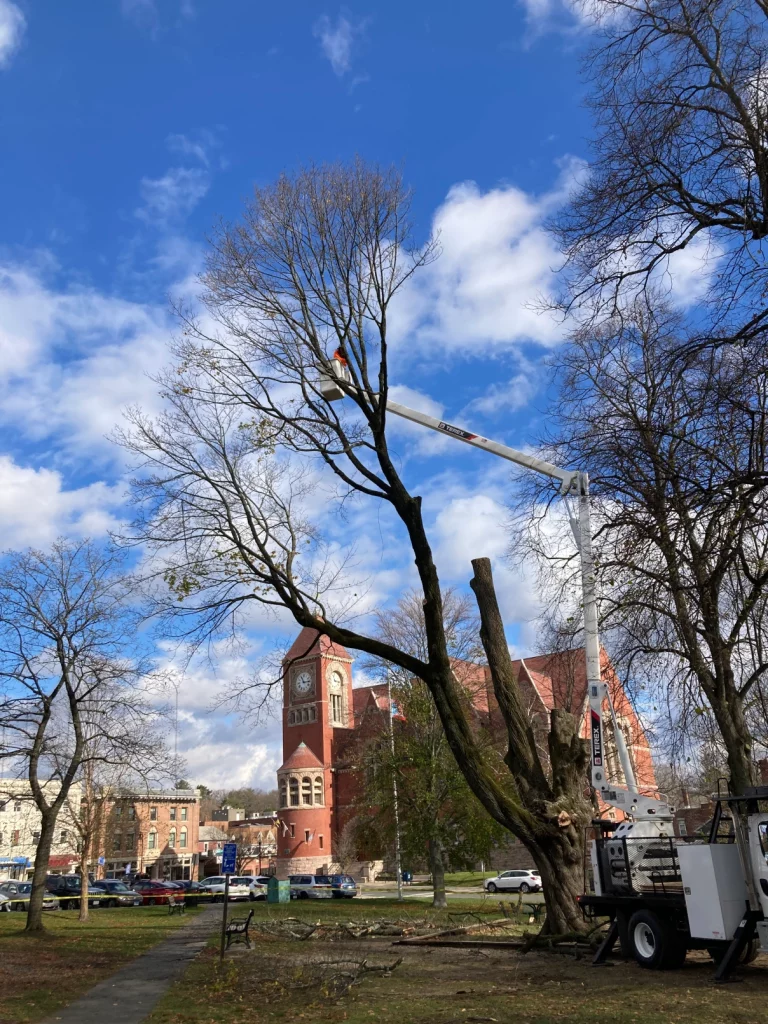
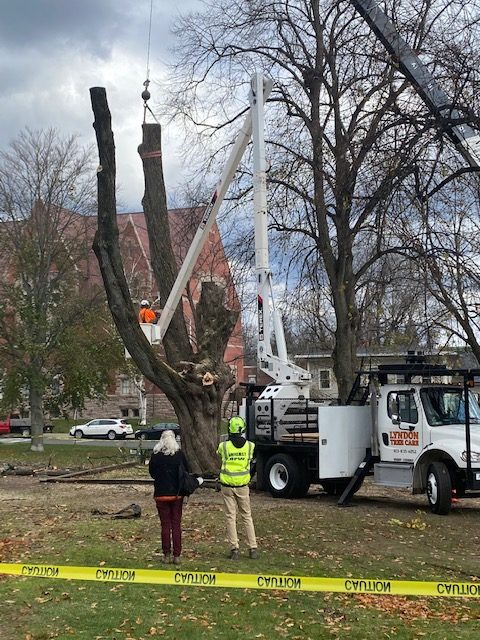
Next time around, I sincerely hope that we will be prepared, like Nonny, to fight harder on behalf of trees that are seen to stand in the way of development. Perhaps cutting down the Merry Maple was the best decision; to my shame, I was not paying enough attention to determine the best course of action either way. Change is inevitable, of course, but we must think once, twice, three times before we cut down a gentle giant that has held its ground and held us in its sheltering shade for 150 years. Especially in these times.
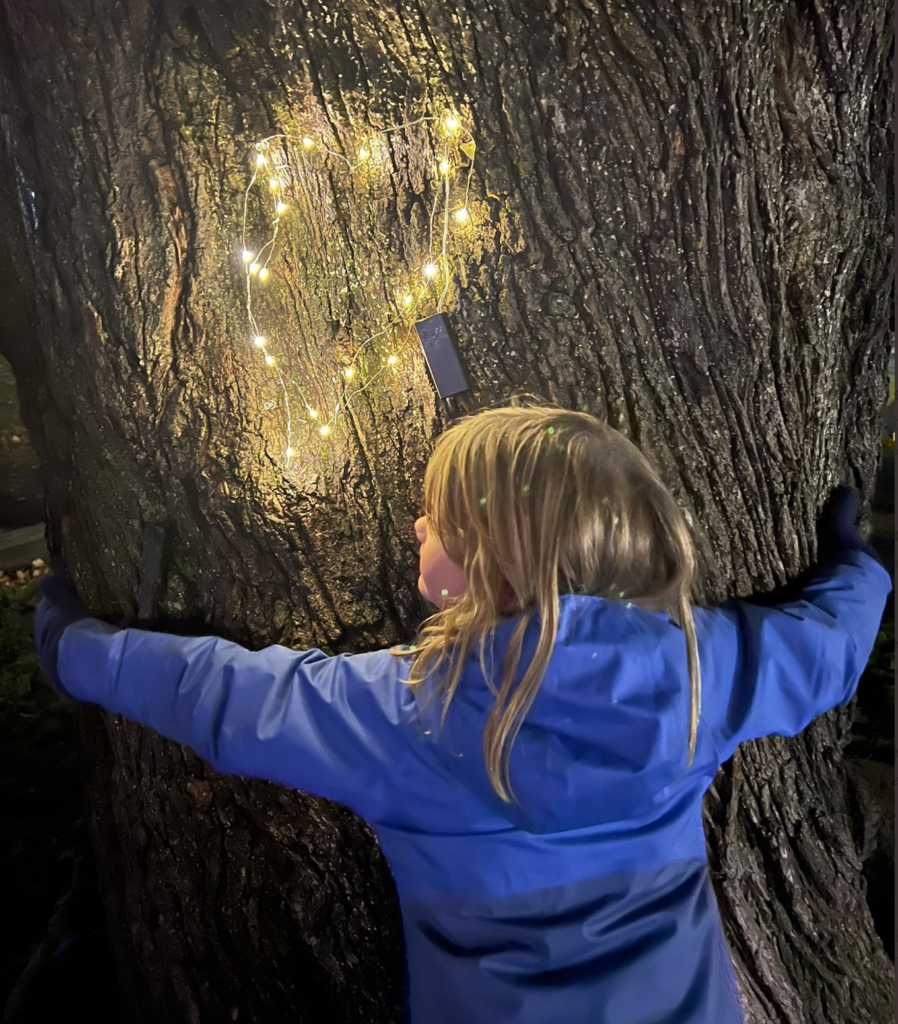
Josna Rege is a resident of Amherst.

Dear Josna,
I loved reading your tribute to Nonnie Burak. I knew her for years and learned so very much from her. I loved her passion for trees and for life.
Please continue to express your ideas about ideas on the importance of trees and also remembering those among us in Amherst who want to nurture them.
Thanks for your thoughtful words about the utterly unnecessary destruction of a legacy tree. As I noted previously, “The Merry Maple” could have graced the Town Common for another generation if cared for properly. A matter of convenience for development should never be a deciding factor when it comes to prolonging the life of those we love. What’s done is done but I hope this becomes a true teaching moment, especially for those among us who have only a passing interest in trees and don’t fully appreciate how much trees help us in these troubled times.
I also knew Nonnie, she was a much loved customer and a friend. As much as she is missed, I’m glad she did not have to witness this sorry event. Let us be vigilant and see that it does not happen again.
In the photo of the Common from 1882 I see 2 trees on the North Common in the general area of where the Merry Maple stood, but I can’t identify the species. Can anyone? That might help with the “age” question. The large trees in the photo are American Elms, most of which were badly damaged or killed by the ’38 hurricane.
A comment about the Sugar Maples on Mt Pollux – they were not “twins” since one was clearly much older than the other (the one that still stands). The older one was quite hollow so it was not possible to judge its age by rings. Fortunately the town has planted several more trees on Mt Pollux.
I too lament the passing of these trees; unfortunately, it’s not safe when large trees in places used by lots of people start to drop large branches. It is sad.
I wish this didn’t happen. Town Manager, councilors, tree arborist know my permanent environmental comments, suggestions and solutions for the common good on different issues since a long time ago. I did it again for the MM in August trying to stop the execution. It didn’t help, they don’t listen/care, obviously.
At least there’s the talk to plant a tree soon there, but I think it would be in a different spot so it doesn’t disturb the ‘vibrant’ renovation project the chamber and town wants at all costs. Amherst is a calm town in general, who needs ‘vibrant’ and more stuff on our public green spaces. Only profit groups. And they still could do their project without the tree destruction. No need for that. Why so much emphasis to destroy, that’s not innovation at all…
The MM was a dear symbol. Symbols are logical entities with charged connotations by residents, their destruction carries the destruction of the soul, the identity of a place, of generations in this case. The MM was our tradition, a cultural, historical, social, educational, generational, ecological and natural link for us all. Living symbols are a treasure for many reasons. Sure, we can make a new symbol. Problem is that the full circle is lost. No history, no memories, no connection. Sure again, story telling helps, but does not justify the destruction.
And I’m from Argentina! It’s 20 years I’m here, love my Amherst, the first town when I arrived. But where were the locals, the generations who massively should’ve stopped the tree execution? I guess most are zombies, just volatile weak minds, they believe whatever they are told, can’t care less, hiding and afraid to speak up at the right time. Worse than that, they do speak but town officials don’t listen, or they pretend they listen but do nothing. That was my case.
Indeed, they showed it very well at the execution site. Such an example for children and youth!
It’s so illogical to create more unnecessary destruction. Those people urgently need a renew and rebuild crash course on problem solving, task based, with conflict resolution oriented tools based on ethics, not private politics. Plus a different global approach (UN SDGs) and local strategies. The town should do more training courses instead of paying external consultants to solve our problems. And we have problems. Or they can just copy/adjust to what other towns are already doing for the environment. There are many priorities more important than the only, unnecessary one.
Long live the MM! Love and peace to all real tree huggers!
Thank you, Anne, for your loving remembrance of Nonny and for your encouragement. -J
Dear Elisa,
Thank you for your comments and for the correction that the trees atop Mt. Pollux weren’t “twins”. I hadn’t realized that they were very different in age, but used the term loosely because they were affectionately named after the twins Castor and Pollux from Greek and Roman mythology. Apparently, Mt. Pollux itself was so named because of those two trees (https://www.gazettenet.com/Famed-tree-at-Mount-Pollux-in-Amherst-to-be-cut-down-16158481).
I didn’t mean to suggest that the tree on Mt. Pollux didn’t need to be cut down, only to make the point that the people of Amherst love our trees, and to include it in my memories of earlier fellings of beloved trees in the town.
Thank you, for your comments, Don, and for your own earlier piece about the Merry Maple. Yes, as you say, what’s done is done, but we must pay closer attention in future. -J
Thank you, Josna, for your heartfelt remembrance of Nonny!
I first got to know her as one of Wöden’s teachers/paras at Marks Meadow, and the last time we got together was when her neighbor (a retired colleague of mine) passed away a couple years ago and Nonny shared some heartfelt remembrance’s of her own.
Besides being the “un-fixture” at Town Meeting (sprinting from speaker to speaker with a microphone), she seemed to grow younger each year, defying time itself — alas if it were only true….
Her connection to the Merry Maple (and devotion to protecting our trees in general) will be missed, but so be will she….
Thank you, Rob, for your memories of Nonny. Yes, her devotion to trees was matched by her devotion to democracy and only surpassed by her love of dance. There was her wide and deep reading, her study of Greek, her interest in people and community, and so much more. She was a good neighbor, an engaged citizen, and a tremendously active person, even in her eighties and despite her illness. -J
Josna, Thanks for your comment. I think you may be mistaken about the source of the name for Mt. Pollux. It actually has a twin hilltop. It’s Mt. Castor, north of Mt. Pollux and, I believe, just north of Shays Street. I think it is inaccessible to hikers these days. If I’m wrong about this, I hope there will be an Indy reader who will be quick to correct me.
We used to hike Mt. Castor regularly, taking the trail up from the bike path toward S.East Street and then to the trail head on Valley View, hiking over the top and then exiting on Shays. We haven’t been up there since last spring and at least then, it was still accessible to hikers.
Thanks for the information, Ken and Art. I was only going by the Gazette article. So Castor and Pollux are the twin hills. I must check out Mt. Castor next year.